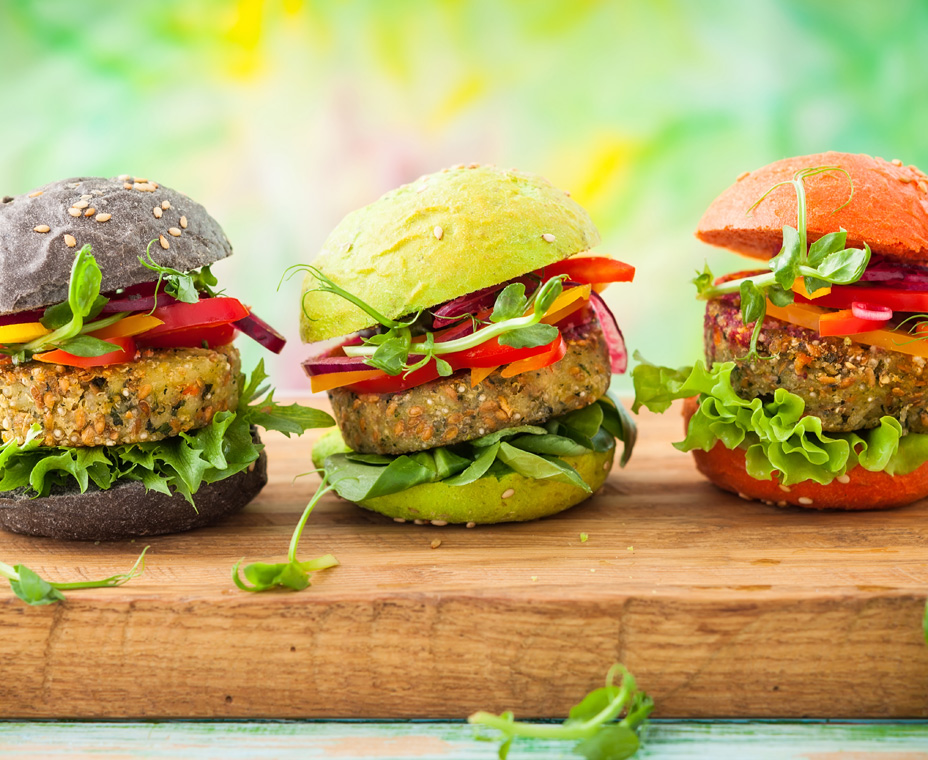A generation or two ago, Americans who eschewed meat were widely seen as staking out prime real estate on the lunatic fringe. In the popular imagination, vegetarians and vegans were consummate outsiders who dared to reject societal norms, as Marta Zaraska writes in her recent book Meathooked: The History and Science of Our 2.5-Million-Year Obsession with Meat.
In an excerpt published in Time magazine in February, Zaraska offers a counterculture magazine’s 1971 observation that “to many Americans, vegetarianism represents another weirdo protest of the head generation against mom-and-apple-pie-ism.” But, Zaraska adds, “Something was different in the ’60s and ’70s: Being a weirdo wasn’t so bad anymore.”
These days, of course, not only aren’t those who adhere to, experiment with, or temporarily embrace plant-based diets considered odd, weird, or hopelessly out of step, but their numbers also suggest they are practically mainstream. Data shows that younger consumers regularly eat vegetarian and vegan food; meanwhile, a growing percentage of older consumers are doing the same. Whether the driver is health, animal welfare, or the environment, it’s clear that plant eaters are now living among more like-minded neighbors.
For those who have chosen to reduce or eliminate meat from their diets, these are auspicious times indeed. From nuts, seeds, and beans to ancestral grains, lentils, pea protein, tofu, edamame, and dozens of other options, there are alternative proteins to satisfy virtually every taste. And the products creative chefs are making with this panoply of vegetable proteins are nothing less than sublime.
In Chicago, Loving Heart offers a “Happy Burger” featuring ground soy, black beans, oats, and onions, as well as tomato, romaine lettuce, cucumber pickles, a vegan cheese spread, and vegan mayonnaise. Root Down in Denver offers a terrific Indian-inspired dish, a Tofu Korma featuring grilled cauliflower, black rice, pine nuts, and strawberries. And at the growing fast casual Sweetgreen, guests are buzzing about the Spicy Sabzi containing baby spinach, shredded kale, tofu, spicy broccoli, beets, carrots, spicy quinoa, sprouts, basil, dried chilies, and carrot chile vinaigrette.
In each of these cases, the owner, proprietor, or menu developer has taken pains to introduce customers to some unusual vegetable proteins in the context of something familiar, comforting, and satisfying.
Might quick-serve concepts opt to seriously explore the realm of alternative proteins? Quite honestly, I’ve looked at the vegetarian and vegan items on some restaurant menus recently and wondered how some of these proteins haven’t yet gone mainstream. After all, what’s not to like about chickpea fritters, barbecued tofu, white bean and rice cakes, black bean fritters, or silken tofu desserts? Once we set aside our prejudices about what “vegetarian food” consists of, we quickly learn that some of the staple alternative proteins are being used to create truly delicious meatless products.
The other side of this particular coin comes in the form of so-called “meat analogues.” It’s not exactly big news that companies around the world have been trying for years to replicate, with a plant-based option, the taste, texture, and mouthfeel of real meat. While the perfect meat substitute has proved elusive, there are signs that things may be about to get substantially better. Impossible Foods, for instance, recently launched its signature Impossible Burger to much fanfare and media coverage. Billed by the company as “a combination of proteins, fats, amino acids, and vitamins derived from wheat, the roots of soybean plants, coconuts, potatoes, and other plant sources intended to disrupt the international meat supply,” this technological breakthrough is a marvel of scientific ingenuity.
The Herbivorous Butcher in Minneapolis makes a similar claim for its products, which are “100 percent vegan, cruelty-free meat and cheese alternatives that capture the best flavors, textures, and nutrients most people are used to without their negative impacts on health, animals, and the environment.”
But there are a generous number of other meat analogues available to quick serves as well, from soy chorizo to lentil patties to a polenta and black bean burger. There is also jackfruit, a tropical crop native to Southeast Asia whose innards are being harnessed to develop new meat substitutes.
The long and short of it is, we’re no longer living in a society where meat substitutes are necessarily bland or odd-tasting, with textures that consistently remind you of the delicious steak you’re not eating. Whether you elect to try to incorporate a soy-based cheese, vegan sausage, or veggie burger into your offerings, you’ll be better positioned to pique the interest of the millennials who are looking for great taste adventures while shrinking their carbon footprints and minimizing their impact on the animal kingdom.











